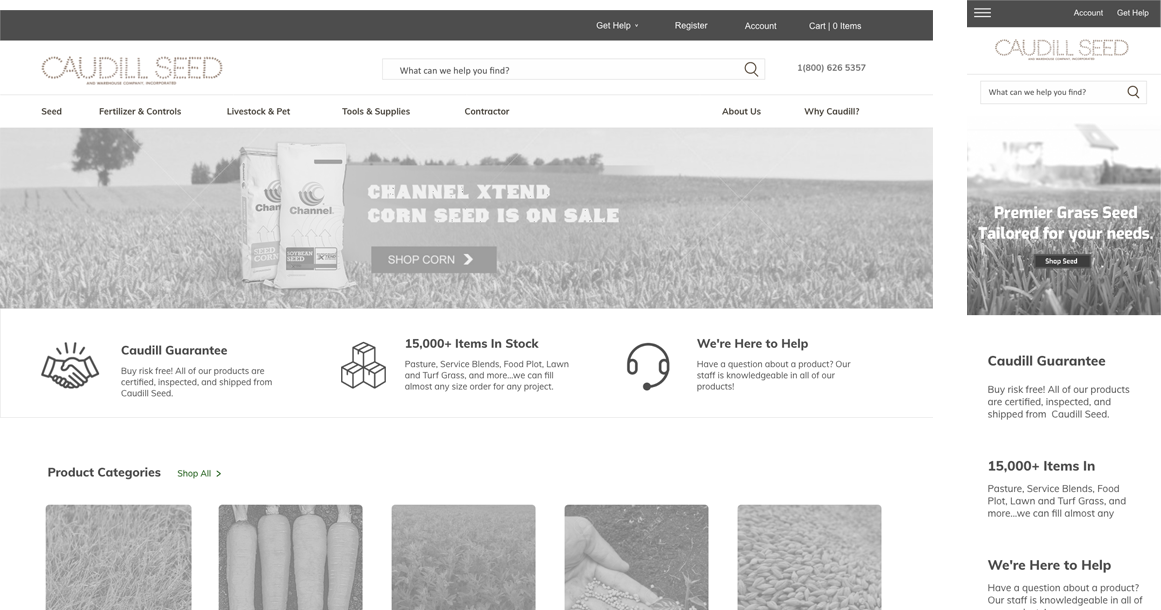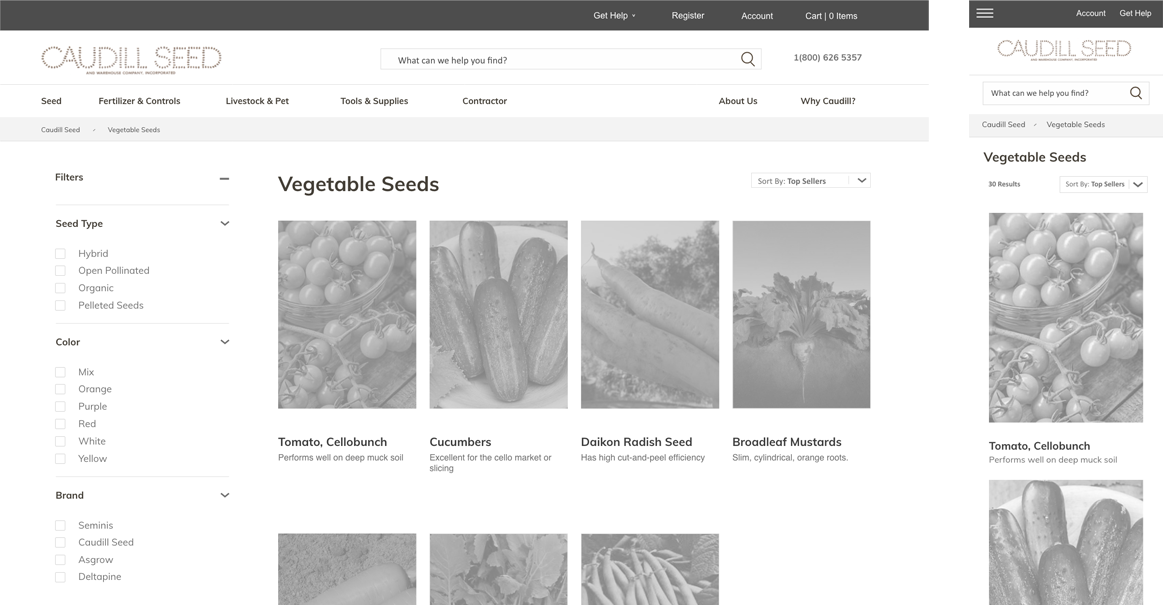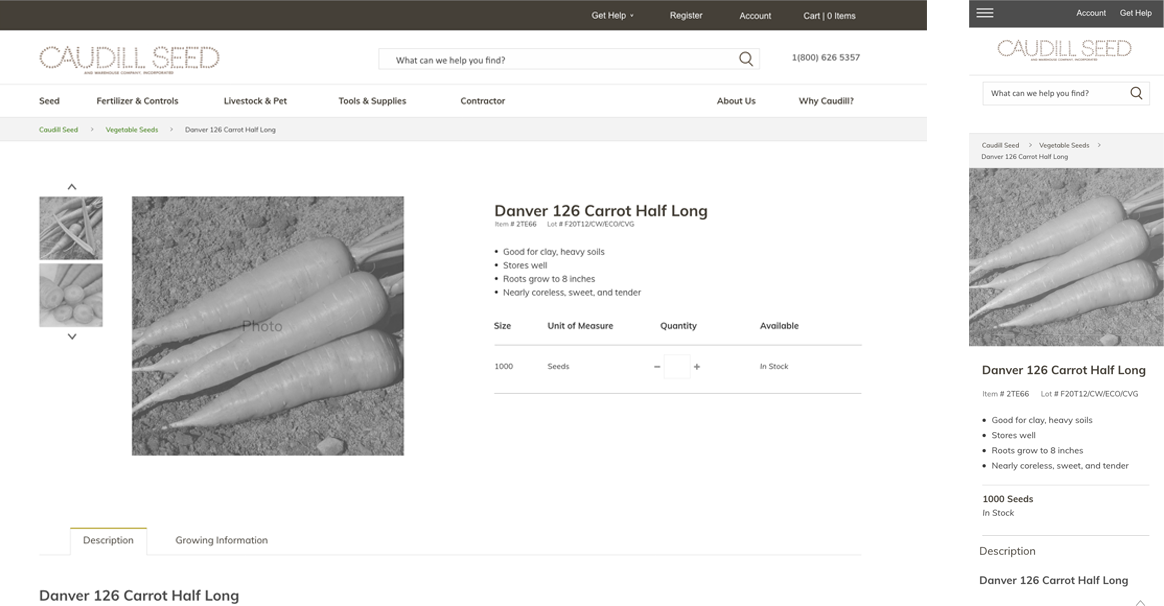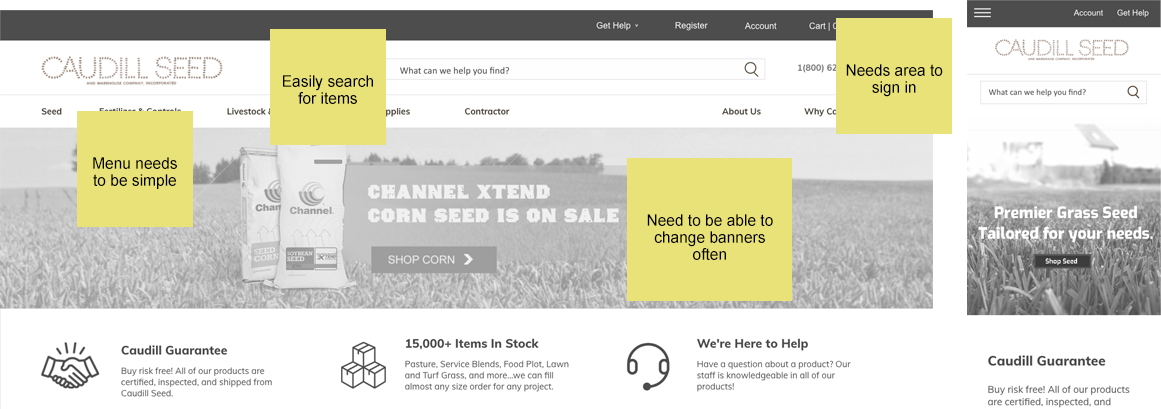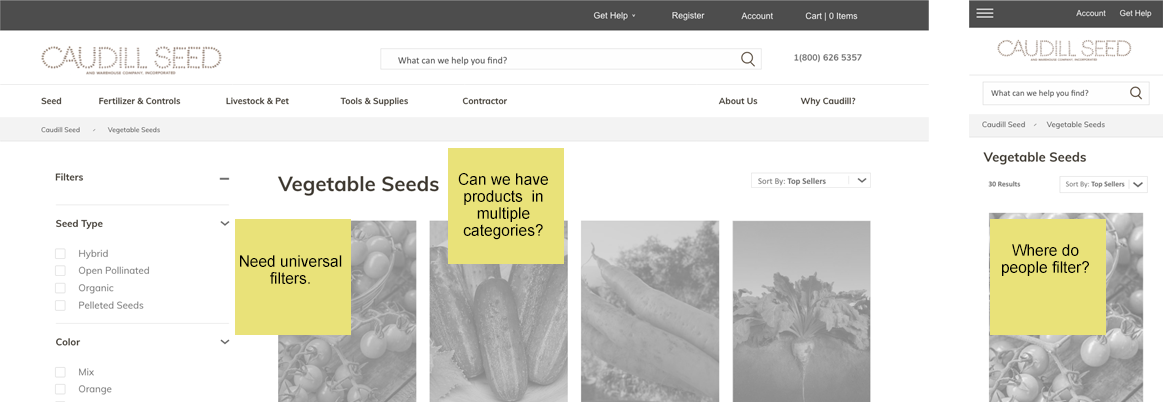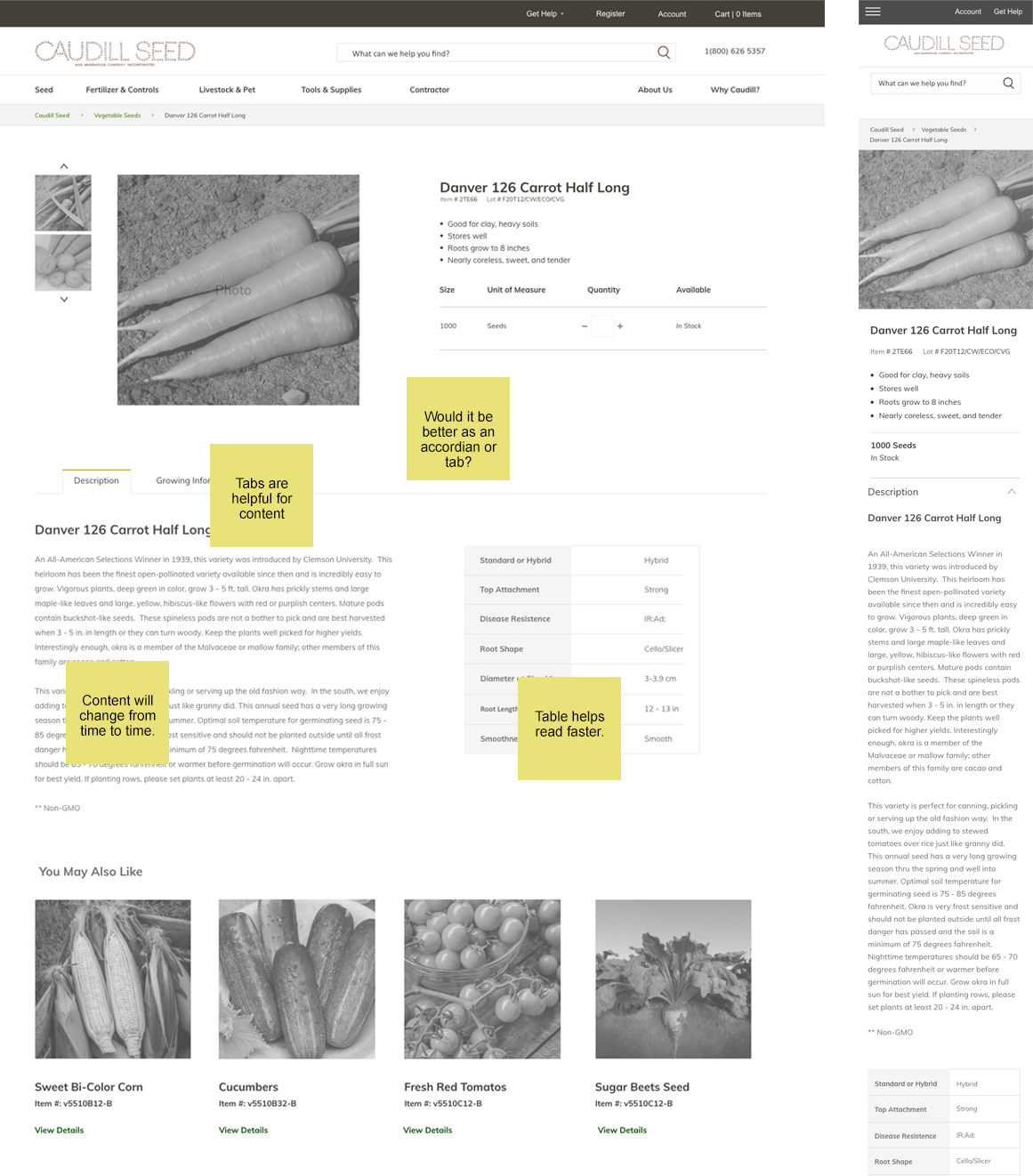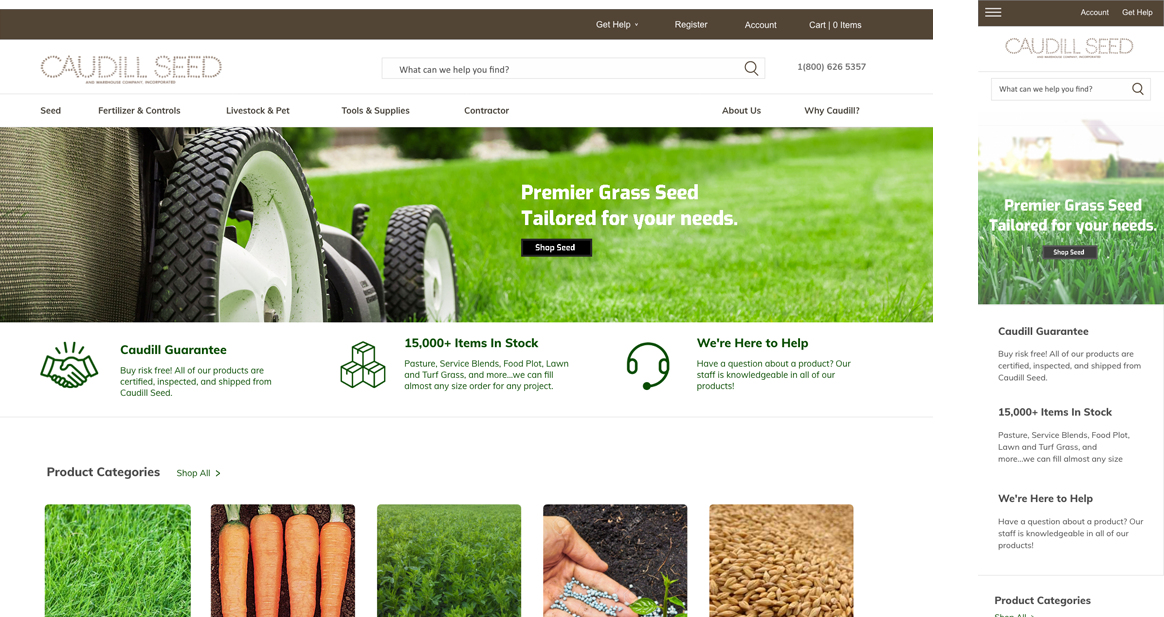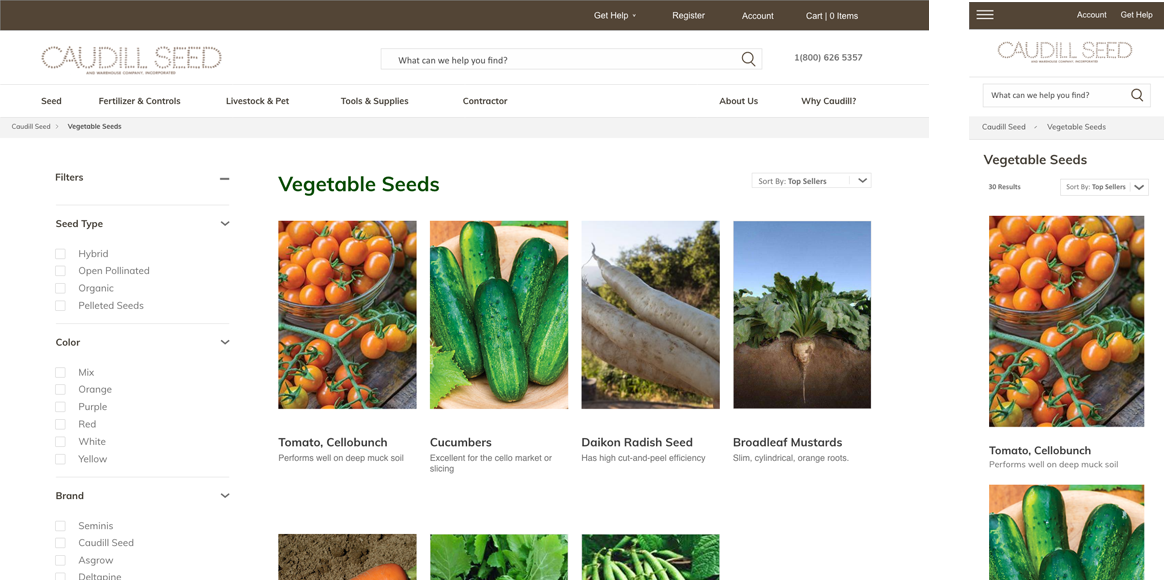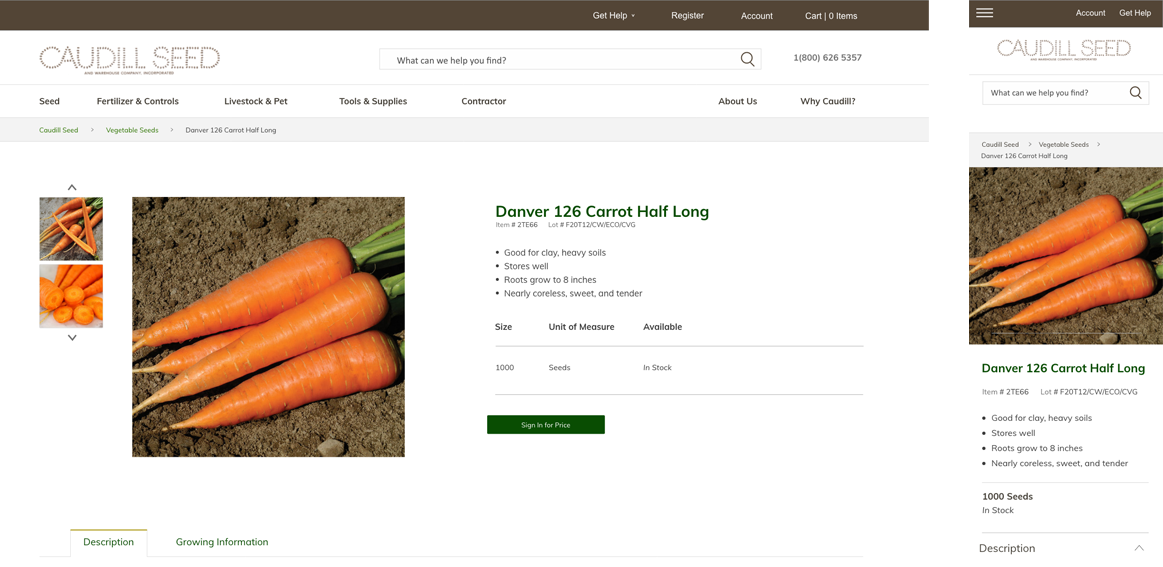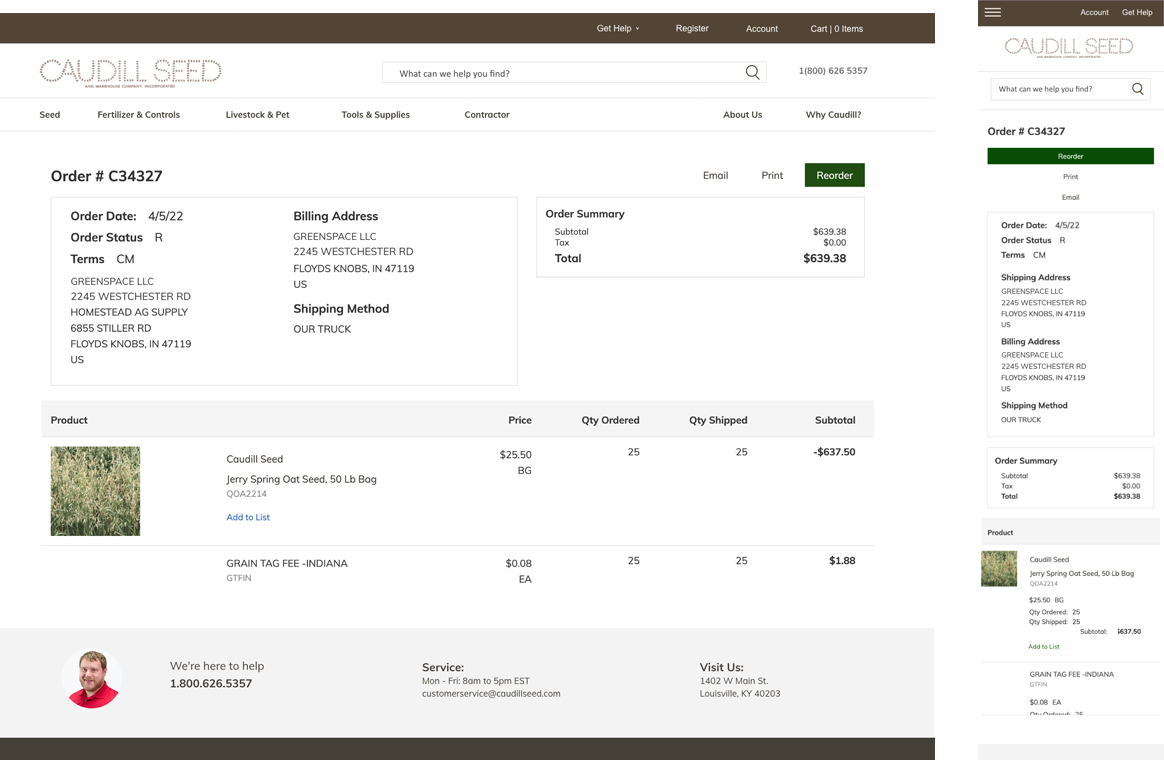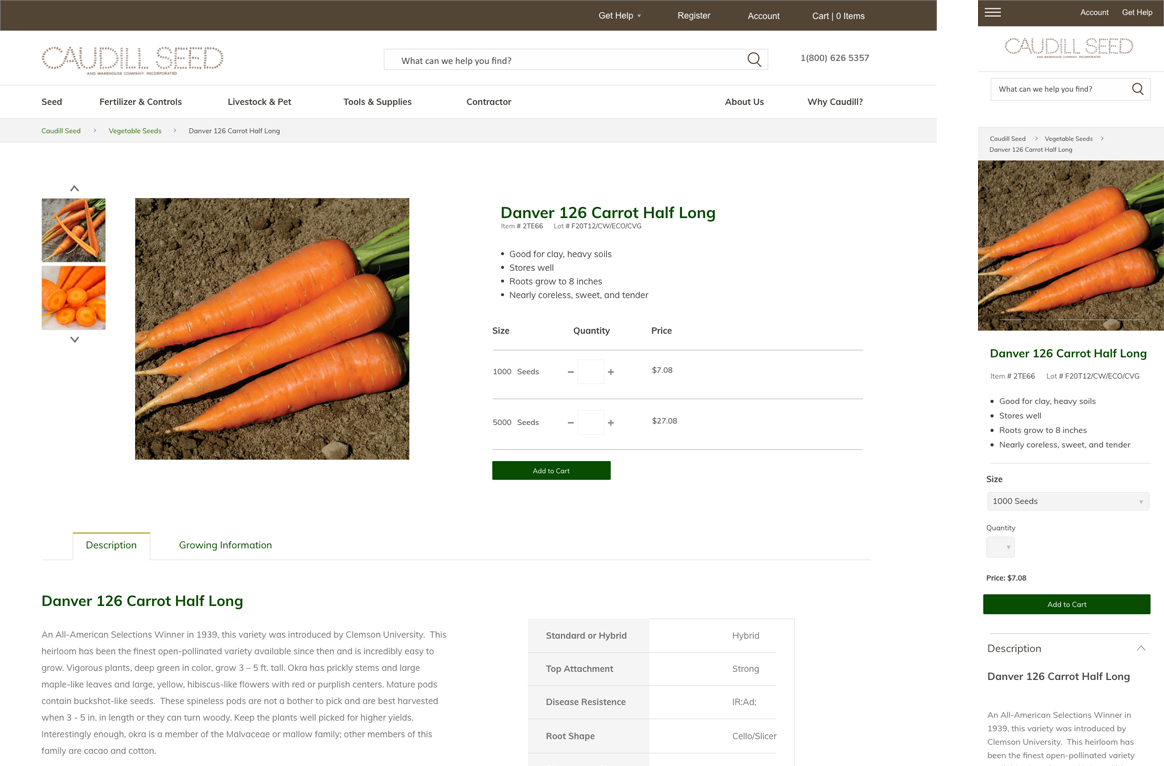Caudill Seed: A Leading Seed Distributor based from the Midwest
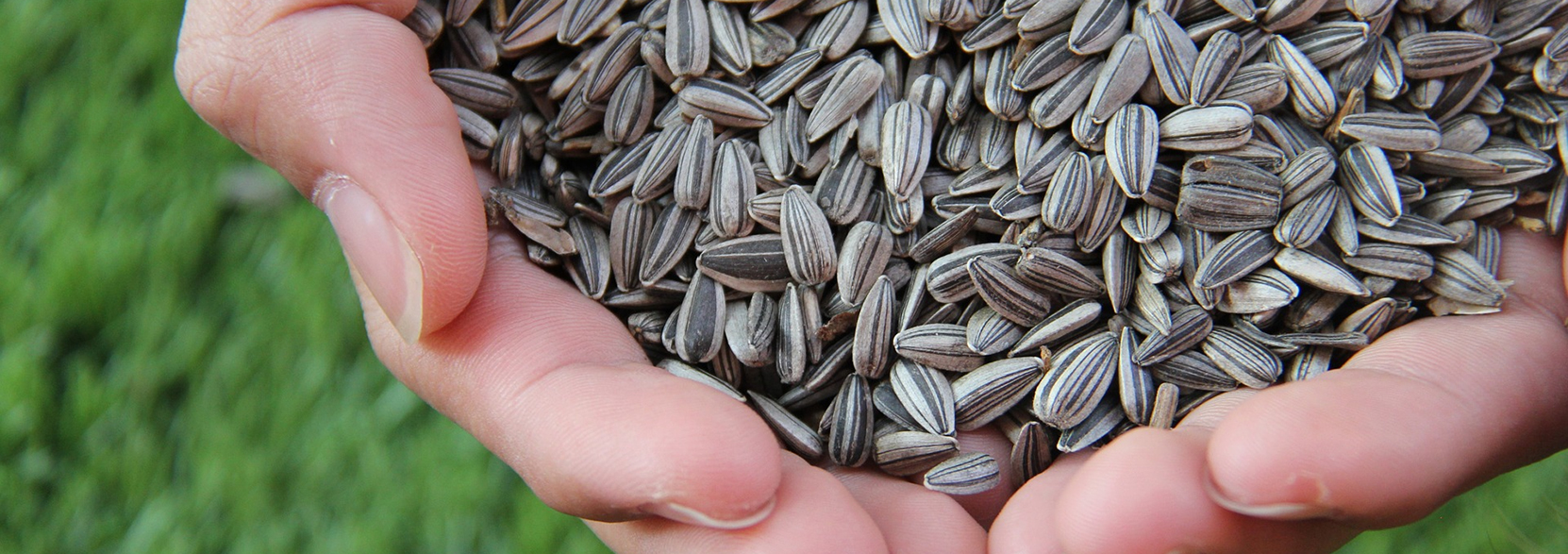
Since 1947, Caudill Seed has been one of the most reputable companies for agriculture supplies in Kentucky, West Virginia and the Midwest. Companies have relied on them to supply them with high quality agriculture products. They have built their reputation by maintaining the position of staying committed to three core principles: value, service, and community.
Although Caudill Seed has experienced a steady growth from their sales representatives, strong competition from other local players inspired their family run business to give its site a digital makeover. Caudill Seed sought to create a digital space that enhanced brand value and perception, and brought to life the company’s deep community roots while showcasing its value-driven business approach.
The Challenge
Caudill Seed used a standalone ERP that made tracking users and sales problematic. To help create a more efficient, sales-friendly environment for their team, an API would need to be built and integrated with their current ERP – plus, have the IT infrastructure to support their new digital capabilities. After this was accomplished, we then would be able to build out the new customer facing website.
Solution
While working with Caudill Seed, we set out to create a responsive ecommerce website that quickly and easily allowed customers to buy products, see prices, and track invoices. We engaged strategically with every aspect of the brand to ensure seamless branding, a sales-driven website, and the right technology for success.
User Research
The first step to solving a problem is to start with understanding what the problem is and having empathy for the people who you are trying to solve the problem for. To get the answers I needed, I first conducted interviews with parts of our team on the business side to see what parts of data would be affected. After I had got all the data, I would then work with our IT provider to see if this was tangible.
The second part of this process was getting information from our customers. I had conducted interviews to learn more about the problems they face to help align our starting point for design.
Process:
After the initial research was completed, we were then able to decide what type of ecommerce platform we needed to support our requirements. We had decided that our best option was to use Optimizely. One of the biggest selling points for using Optimizely was the ability to personalize our customers B2B experience as well as the integration with our ERP.
Once we had everything in place we started working with our IT provider to build out the API’s so all data would flow from our ERP into Optimizely seamlessly.
While the API calls were being built we were then able to start the beginning phase of designing the website. Our first steps were to create wireframe concepts to test our users. My first concept focused on homepage, product landing page, and the product detail page.
After completing our wireframes, we then were able to show these to the leadership of the Caudill Seed team. In our presentation we were able to get input on all parts of the wireframe. This allowed us to quickly arrive at what worked, what didn’t and what we could improve on.
Here’s the final design concepts I created for the homepage, PLP, and PDP.
The second part of the project is what I believe is the most challenging: account administration. This is where design met data from the ERP. Everything from pricing, past invoices, inventory, to order placing. Here is a view from when a customer logs into their account.
The Results
Impressions and organic visits saw impressive growth, and page 1 Google rankings became the norm. And because becoming a customer was so much easier, new customers grew rapidly. With a more intuitive website more returning customers were able to see crucial information about their accounts and make purchasing much easier.

